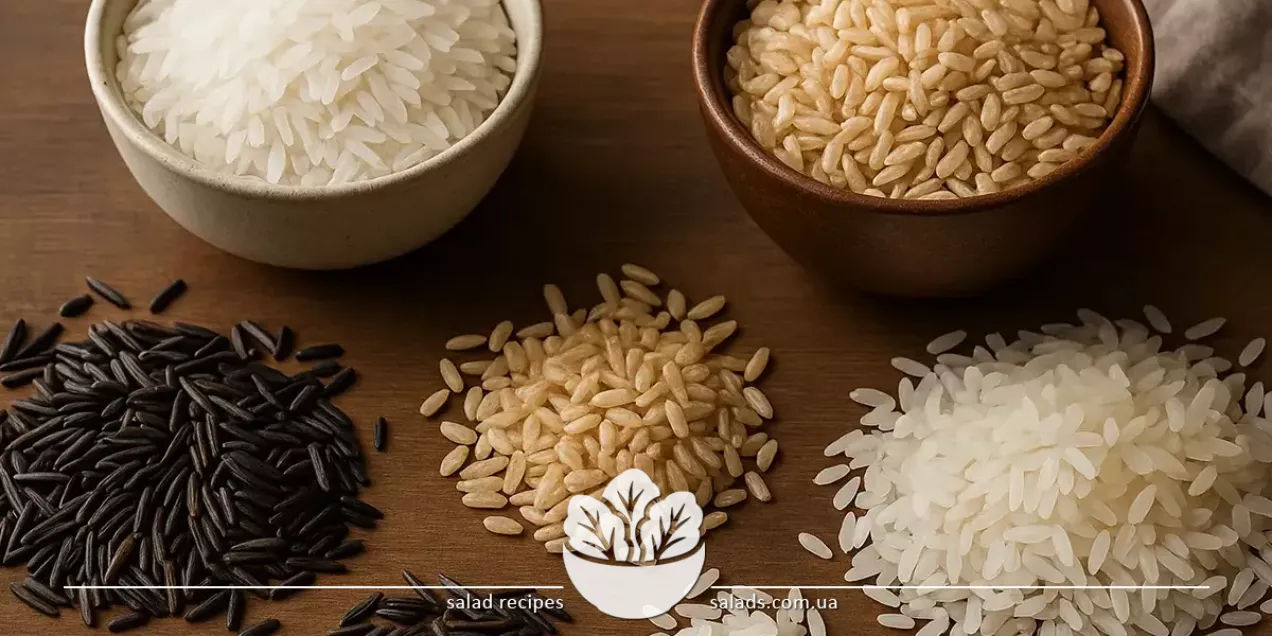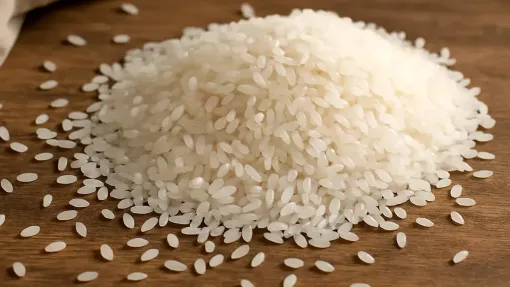Types of Rice

Types of rice encompass a wide range of varieties, each with its own flavor characteristics, culinary purpose, and nutritional value. This makes rice a universal grain used in cuisines worldwide – from Asia to Europe. Within the cereals category, it stands out for its diversity of forms, colors, aromas, and textures, making it easy to choose the perfect option for any dish – savory or sweet, everyday or festive.
Different Types of Rice
Long-Grain Rice: Fluffiness and Aroma
Long-grain rice is the most versatile type, known for its fluffy texture after cooking. The grains are elongated and have a low starch content, which minimizes sticking. For this reason, long-grain varieties are often used in dishes where maintaining the grain's structure is important – side dishes, salads, pilaf, soups, and casseroles. One of the most well-known examples is basmati rice – an aromatic variety with a subtle nutty fragrance, widely used in Indian and Central Asian cuisine. Jasmine rice is also popular – soft, slightly sticky, with a distinct floral aroma, ideal for Thai dishes. Long-grain rice pairs well with vegetables, spices, meat, and fish. For instance, it can be served as a side to herring or mackerel in sauce.
This type of rice adapts well to various cooking methods: boiling, baking, steaming, or using a multicooker. When rinsed properly and cooked with the right water ratio, the grains retain their shape and don’t overcook. That’s why long-grain rice is commonly used in food service, where consistent quality and attractive presentation are key. Besides taste, long-grain rice has moderate calorie content and solid nutritional value. It contains complex carbohydrates, fiber (especially in unprocessed form), B vitamins, and minerals. This makes it a reliable energy source for the day without causing sharp blood sugar spikes.
Short-Grain Rice: Softness, Stickiness, and Desserts
Short-grain rice has short, almost round grains that contain more starch than long-grain varieties. This is why it becomes soft and slightly sticky after cooking, making it perfect for dishes requiring a creamy or cohesive texture. It's commonly used in porridges, puddings, casseroles, and sushi. In dessert cooking, short-grain rice is indispensable – it’s boiled in milk with added sugar, cinnamon, vanilla, or citrus zest. This rice pairs well with fruits, berries, nuts, and dairy products. For example, milk rice porridge with honey, baked apples, and cinnamon is a classic children's meal and a light breakfast for the whole family.
Aside from sweet dishes, this rice type is also used for sushi since it holds its shape well when forming rolls and nigiri. In this case, the rice is prepared with rice vinegar, sugar, and salt, giving it its characteristic flavor and necessary stickiness. The grains don’t fall apart but stick firmly together – exactly what’s needed for sushi and Asian appetizers. While short-grain rice is considered less diet-friendly due to its higher glycemic load, it excels in recipes where texture and cohesion matter. It’s the right choice when you want a soft, comforting dish with a pleasant consistency – from porridge to rolls, from casseroles to puddings.
Brown Rice: Whole Grain, Nutrition, and Health Benefits
Brown rice is unpolished or partially polished rice that retains the grain’s outer layer. This layer gives brown rice a more pronounced texture, a light nutty flavor, and significantly greater nutritional value than white rice. It’s considered one of the healthiest grains, especially in diets focused on fiber, vitamins, and complex carbs. Thanks to the outer layer, brown rice is higher in dietary fiber, which aids digestion and stabilizes blood sugar levels. It contains B vitamins, magnesium, phosphorus, manganese, selenium, and plant antioxidants. It pairs well with vegetables, legumes, herbs, and light proteins. For example, brown rice with stewed vegetables and hard cheese is a tasty and nutritious lunch that’s easy to prepare.
Brown rice takes longer to cook (40-50 minutes) than white rice and requires more water. The result is a rich texture, moderate stickiness, and deep flavor that adds sophistication to meals. It can be served as a side, a base for bowls and casseroles, or added to soups and salads. Brown rice is especially valued by those who follow whole-grain diets or aim to reduce their intake of simple carbs. Including it regularly in meals promotes long-lasting satiety, stable digestion, and lowers the risk of metabolic disorders.
Wild Rice: Exotic Look, Texture, and Micronutrients
Wild rice, although technically not a type of rice but the seed of a North American aquatic grass, is widely used as a grain due to its unique qualities. The grains are long and narrow, dark brown or nearly black, with a distinctive, slightly nutty texture. After cooking, wild rice retains a crunchy bite that adds structure to dishes. This variety is highly nutritious: rich in protein, fiber, B vitamins, zinc, phosphorus, magnesium, and antioxidants. It's often recommended for people with higher micronutrient needs or those following low-glycemic diets. For example, a warm wild rice salad with grilled vegetables and boiled chicken eggs is a balanced and nourishing everyday meal.
Wild rice takes longer to cook than regular rice – up to 50 minutes, sometimes after pre-soaking. It can be served alone or mixed with white or brown rice to vary texture and appearance. Such mixes are often used alongside meat or fish or as a base for festive sides. Thanks to its striking appearance, wild rice often features in restaurant dishes, salads, stuffings, or as a highlight in soups and bowls. It's not only nutritious but also visually appealing, enhancing the look and taste of meals.
Parboiled Rice: Practicality, Nutrients, and Ease of Cooking
Parboiled rice is rice that has been steam-treated under pressure before milling. During this thermal process, nutrients from the outer husk migrate into the grain, and the structure becomes firmer. As a result, parboiled rice remains fluffy after cooking, doesn’t stick together, and retains more vitamins and minerals than regular white rice. This rice is especially convenient for daily use – it’s easy to cook, doesn’t get mushy, and has a long shelf life. It’s ideal as a side dish for meat, fish, vegetables, or for preparing pilaf, casseroles, and large-batch meals. For example, a rice casserole made with parboiled rice, vegetables, and mackerel is a filling and balanced family meal.
Parboiled rice has a golden hue when raw but turns white after cooking. Its texture is more elastic than that of white rice, helping it retain its shape even after reheating. This makes it a great option for make-ahead dishes, lunch boxes, or fast food meals. While its flavor is milder than that of aromatic varieties, parboiled rice stands out for its versatility, resistance to overcooking, and nutrient retention. It contains vitamins B1, B3, and B6, along with iron, calcium, and phosphorus, making it a nutritious and energy-rich component of a balanced diet.
